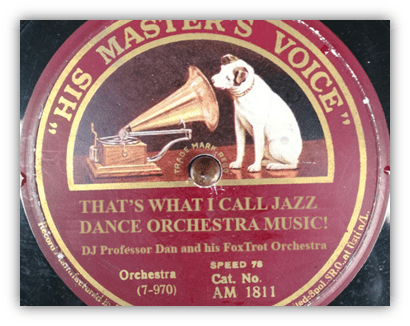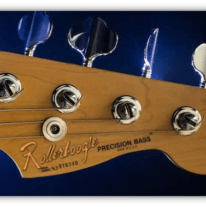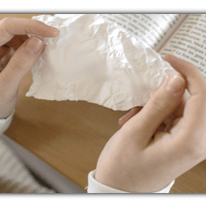So everybody… I’m writing a book!

Hopefully I’ll be writing many a book! A whole series of books!!
A 15-volume series of books on the history of pop music!!!
Preliminary name for the series: “Record(ed) History.”
The first volume – “From Thomas Edison to Duke Ellington” – will take the story from Thomas Edison inventing the phonograph in 1877, up to around 1930, when the Great Depression pretty much destroyed the entire industry and they had to dream it up all over again.
It is, like all eras, a fascinating one.
I’ve found myself going down rabbit holes- entire warrens of rabbit holes – most of which I never even suspected existed. For example:
Did you know…
That the hottest sound of the 1890s was marching band music?

And that John Sousa, the leader of the most popular marching band in America, once testified to Congress that phonographs would destroy music?
Or even worse, would lead to a terrifying future where “we will not have a vocal cord left. The vocal cord will be eliminated by a process of evolution, as was the tail of man when he came from the ape”?
Well, now you do.
But I’ve made it to the late-1920s, and I think now is a good time to share with you some of my research. In this four-part mini-series, I’d like to take you back to the pop scene of 100 years ago: to:
The Sounds of 1923!
aka…. That’s What I Call Jazz Dance Orchestra Music!
If you bought a record in 1923, there is a very good chance you are now dead.
It is also a very good chance that the record was by an ensemble that the newspapers liked to call a “Jazz Dance Orchestra.”

There were a lot of them.
By 1926 it was estimated that the United States contained 300,000 members of a Jazz Dance Orchestra!
The day jobs – naturally, actually, night jobs – of these Jazz Dance Orchestras was to dress up in tuxedoes and bowties and to provide ballroom dancing music at plush hotels. Waltzes a lot of the time, but mostly foxtrots. The bands would usually be named after their conductor, standing out front, waving a baton. At least one of the major players in this scene – Ted Lewis, more of whom later – wore a top hat.
This was not an underground scene.
And the biggest Jazz Dance Orchestra leader, the Jazz Dance Orchestra leader that all Jazz Dance Orchestra leaders dreamt of being, was white man – they were all white men:
Paul Whiteman.
A man who was not only a Jazz Dance Orchestra leader but the head of a franchise of 40 Paul Whiteman orchestras, everyone of them playing at the most expensive Gilded Age hotels and resorts America had to offer.
At this point I am bound by pop music historian tradition to mention two facts:

- He looked like Oliver Hardy:
ie, a portly gent with a pointless moustache.

- Everyone insisted on referring to him as “The King Of Jazz.”
The later of those facts has long been a source of mirth amongst jazz purists. I don’t care which definition of jazz you go by; whether you’re a cool jazz or a hot jazz enthusiast, a free jazz, jazz-funk or DJ Jazzy Jeff fan. None of your working definitions of “jazz” would ever include Paul Whiteman’s biggest hit of 1923 – quite possibly THE biggest hit of 1923 – “Parade Of The Wooden Soldiers”, a fox-trot friendly rejigging of a decades old marching-band favourite.
1923 was actually a bit of a quiet year for Portly Paul. According to the research/guestimates of Joel Whitburn, Paul only had two Number Ones that year, although a whole lot of his other hits – including foxtrot friendly renditions of “Carolina In The Morning” and “Way Down Yonder In New Orleans” – came close. In each of the previous two years, he’d had FOUR NUMBER ONES!!
When you reach that level of pop dominance, you can call yourself whatever the darn hell you like.
But you need to understand something:
“Jazz” in 1923, was a word without a definition.
Or a word with a definition so flexible and so all-encompassing that it might as well not exist. Everyone liked to say “jazz” – it was, and remains, a fun word to say – but nobody seemed to really know what it meant:

Was it a noun?
A verb? An adjective?
Was it a style of music?
Or just a just the thrilling feeling of living young and fancy-free in America in the 1920s, looking forward to a future of flappers and flying-machines? Nobody seemed to know, and you can find examples of all of these definitions, often used interchangeably, sometimes in the same sentence.
If the definition of “jazz” was purely limited to music, was it simply synonymous with pop music as a whole, or pop music you could dance to, or pop music you could dance to that originated from the Black folk down…?
And here we vaguely wave our hands in a southerly direction.

A few years earlier. proto-flapper Marion Harris appeared to have the impression that it came from Tennessee, a not uncommon theory at the time.
Nowadays it is generally agreed that “jazz” came from New Orleans.
Specifically the naughty part – (ie it had a lot of brothels) – neighbourhood of Storyville. But just to add to the confusion, nobody called it “jazz” down there. They just thought they were playing hard-core ragtime. The Black musicians of New Orleans were aware and proud of the fact that the ragtime they played was rag-ier than the ragtime the rest of America played. But it was still just ragtime man. They didn’t have a special name for it.
For most Americans, when they thought of “jazz” as a kind of music – and not just as a kind of a zeitgeisty vibe – they thought of a band from half a decade earlier: The Original Dixieland Jazz Band:

A bunch of white guys from New Orleans who had taken New York by storm by playing music that sounded nothing like music, but like a rush of anarchic, hyper-energetic, hyper-fun noise.
And featuring animal sound effects! Any animal would do, but donkeys braying was a particularly popular choice.
Please note the trombone player standing inside the grand piano; that’s the kind of wacky, zany kids these guys were!
The runway success of the Original Dixieland Jazz Band (five top ten hits in 1918 and 1919 according to Joel including a Number One with “Tiger Rag”) had been followed by a whole wave of “novelty jazz” bands, who likewise liked to make animal noises. This was not a sound that was built to last. Nor was it a sound to be taken seriously. By 1923, most of that sound had died out, and most of the bands that followed were trying to distance themselves from the whole thing.
About the only popular band of 1923 that still embraced the “animal noises” method of making music was Ted Lewis.

A man who was discovered on the boardwalk of Coney Island playing his clarinet in a clown costume.
A man who – and I quote here from Victor Phonographs own marketing material – played his clarinet “like a dog in his dying anguish.”
It remains uncertain whether he made it sound like that on purpose. It’s not impossible that he simply couldn’t play.
Paul Whiteman himself liked to talk about how he was once in a proper “jazz” band – in San Francisco, the second most hardcore ragtime scene in America after New Orleans – but got kicked out because he couldn’t “jazz” (that’s “jazz” as a verb) properly. He could however make some surprisingly strange music for a guy who was rarely seen without his tuxedo on.

“Whispering”, from a couple of years before, and the template for the whole Jazz Dance Orchestra movement – the 1920s “Smells Like Teen Spirit” – was a delightfully odd little record.
Just when you’ve gotten into its mid-tempo foxtrot banjo-plunking groove, Paul drops… what is that sound? Does it come from outer-space? Is it a Theremin? It can’t be… the Theremin is still decades away!
I’ve mentioned the “foxtrot” a couple of times, and I’m feeling conscious that I may have left the impression that it was a dance for uptight squares. This is unfair.
Only a decade or so earlier, the foxtrot had been the subject of a mass moral outrage. A dance-step that was putting Western Civilization in peril. This was partially due to the fact that the foxtrot involved close physical contact with another human being.
But it was also because it had originated in the Barbary Coast neighbourhood of San Fransisco, the most dangerous neighbourhood in America – a fact not entirely unrelated to its being the second most hardcore ragtime scene.

A neighbourhood where the typical Saturday night – or weekday night for that matter – ended with you being drugged, kidnapped, and waking up the next morning on a ship in the middle of the Pacific Ocean, at which point you would be informed that you had just started a new career as a deck scrubber.
This appears to have been the most popular hiring practice for a large chunk of San Franscisco’s shipping industry.
This is the environment in which the “Foxtrot” was born.

Also: “The Bunny Hug”, “The Grizzly Bear”, and “The Turkey Trot.”
And although a decade had passed, and the “Foxtrot” had been scrubbed and sanitized, it was still a dance with a bit of an edge. The fact that Paul Whiteman was a San Franciscan – although whether he spent many nights in the Barbary Coast is doubtful – probably gave him some much-needed street cred.
Although Paul seemed to embrace the “jazz” word, most of the other Jazz Dance Orchestras did not. They wanted to be called… virtually anything but.

Isham Jones – the second most popular band leader of 1923 – was so desperate to be regarded as anything but “jazz” that he suggested the deeply generic “American Dance Music.”
It didn’t catch on.
(Here’s Isham’s big 1923 hit “Swingin’ Down The Lane.” He wrote it himself, an uncommon practice at the time. It’s quite good)
The Jazz Dance Orchestras wanted to distance themselves away from “jazz” so much that they held a competition, requesting members of the public to come up with suggestions for a better genre name.
The competition was astonishingly popular with 700,000 entries! My personal favourites include “Peppo”, “Merry Hop”, “Hades Harmonies”, “Jog-Hop,” and the winner:

“SyncoPep.”
It didn’t really catch on, and they just kept on being called “jazz.”
Despite very clearly not being so.
Next Time:
The Milli Vanilli of 1923?
My Twitter/ X… whatever…
More…
Let the author know that you liked their article with a “Green Thumb” Upvote!






Welcome aboard! I look forward to reading the subsequent installments of your series. I suspect you’ll find a receptive audience here!
Oh wow, just last night I submitted a piece on 20’s jazz, which even goes into Paul Whiteman. It comes at it from a different angle, though, so more like cousins than duplicates.
The earlier jazz stuff really is frustrating to try to cover because of the dearth of recordings to sample, and the complete lack by legends such as Billy Bolden. The 20s were certainly a godsend in that regard.
Very interested in your book!
“Buddy.” For some reason I got yelled at when trying to edit.
Haha, I got that the other day. Something like “You’re posting too fast!” in bright red. Well yes, I’m aware now that I should slow down and proofread before I submit, but please sir may I fix my mistake? 🥺
I will look at this – Everyone, please let me know it keeps happening.
What has dancing become? 100 years ago, dancing was understood as an organized activity, usually undertaken in pairs, where everyone followed the same basic movements.
When I was a teenager, dancing was chaotic, violent and uncoordinated thrashing with your peers, where an injury was not out of the question.
When I was in Nepal, dancing was either a skillful solo activity or group choreographed activity. Never done in pairs. If the dance wasn’t choreographed, dancing was strictly a one-at-a-time phenomenon with everyone else looking on from the sides and clapping.
I’m too old to have an opinion about the state of dancing today, but I suspect some through-line between our dancing habits and other social parameters through time could be drawn.
Whither the foxtrot alas!
Dancing has become something you do alone in your living room as you vacuum, hoping no neighbors outside can see you from your window.
Or maybe that’s just my Irish heritage coming out…
Thanks mt58 for the artwork, particularly giving me my own personalized HMV record!!
That is great!
My pleasure, @DJ Professor Dan ! Back ‘atcha with a Bunny Hug!
Thanks for a great Debut Article!.
Welcome along Dan and best of luck with your epic undertaking.
As ever, it’s nice to see that moral panic and wild claims are nothing new. The source of outrage may change but the discourse remains the same. I could say when I listen to ‘name redacted’ I wish that vocal cords had been eliminated but that would be mean. More accurately it would be anyone that has heard me sing would wish that.
Look forward to hearing more on how SyncoPep evolved. Though that sounds more like some snake oil drugstore con that promises to revitalise and have you up and dancing the quickstep in quicktime.
I’ve always enjoyed writing the throwback reviews of old #1 songs on the mothership, but I freely admit to being anything but an expert on the old music. It’s a hard listen for those not used to it. Over time, I’ve listened to enough that I’ve learned to like it. On any given day I might be in the mood to listen to a 20s or 30s playlist, and enjoy it!
I don’t think that I knew that Whiteman had orchestras all over the place. I like all the discussion here clarifying that jazz just didn’t have the same meaning that it developed after WWII. In fact, it sounds like it would have been pretty hard to define back in those days.
Excellent debut!
Could the Theremin-sounding instrument be a very well-played slide whistle? My first guess was a musical saw, but it makes a slightly different sound.
My theremin guy also plays musical saw:
https://www.youtube.com/watch?v=q7cMJn0HAdE
I have a plumber.
I have a person that knows exactly what to do if there’s a bat loose in my attic.
But I realized today that if the need calls, I’m toast. What I really need is:
A Theremin Guy.
Theremin lies the problem
…
I vote for slide whistle…
Folks on this site seem to agree it’s a slide whistle.
https://forum.talkingmachine.info/viewtopic.php?t=29252
Sounds like a slide whistle to me
Glorious!! Great first article – keep them coming.
Interesting stuff. I have in recent years become interested in the pre-rock ‘n’ roll era of recorded music. I recently read Bob Stanley’s book Let’s Do It |The Birth of Pop Music: A History. I wonder if you have read that and if you have any opinion about it.
Love Bob. Loved the book. He does sort of skim over this era though. My book is going to be very much more of a deep dive.